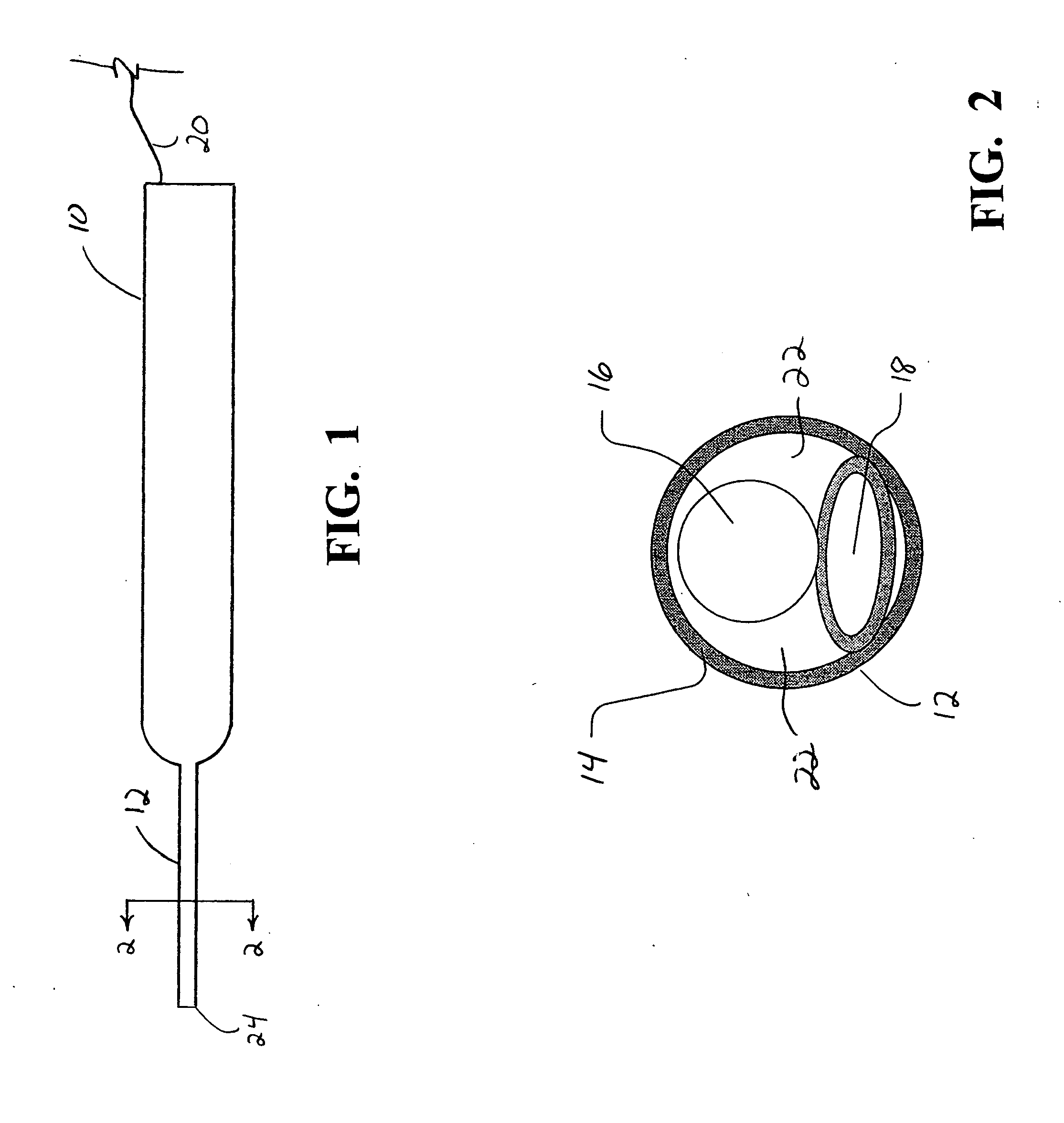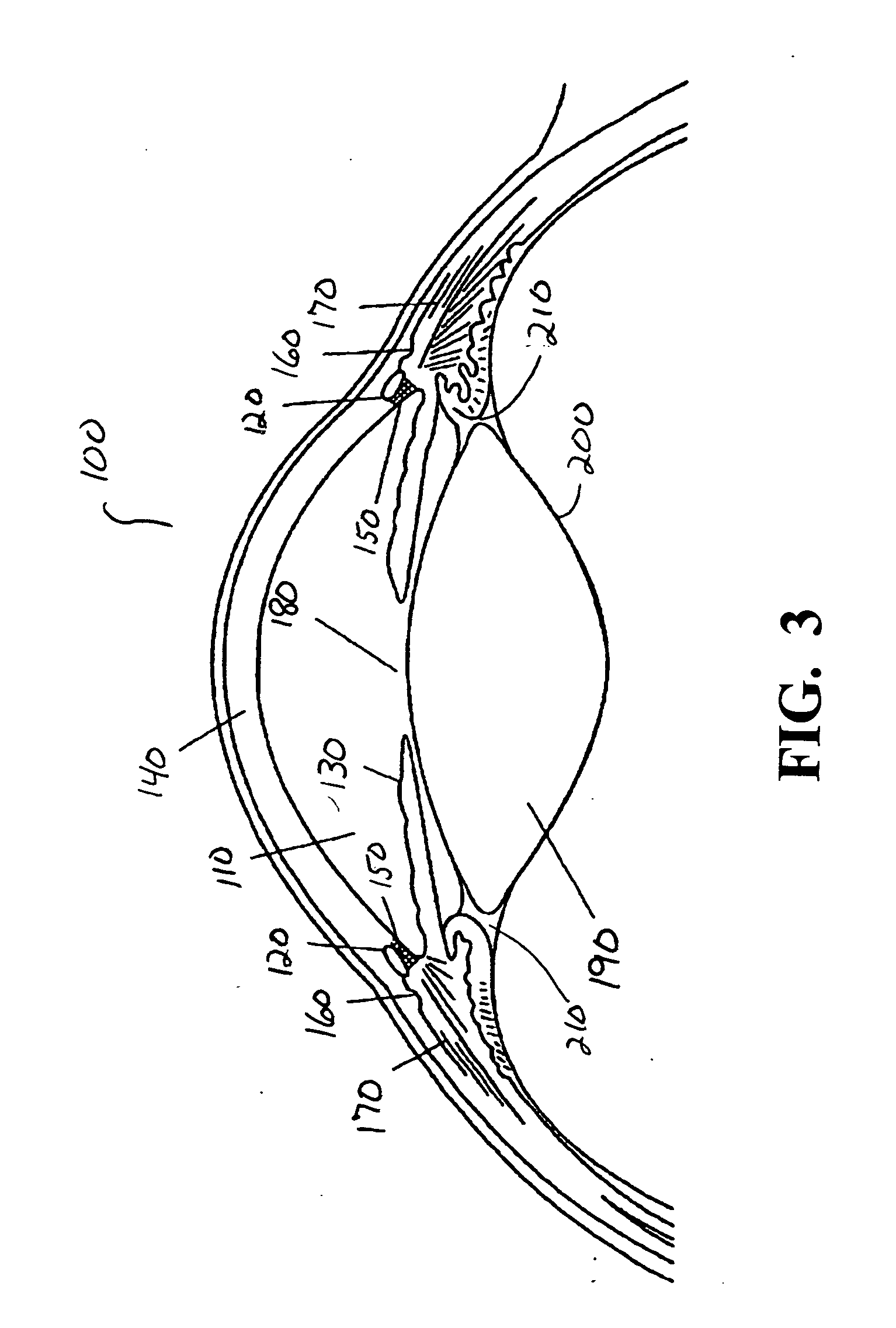Surgical apparatus
a surgical apparatus and glaucoma technology, applied in the field of eye surgery, can solve the problems of abnormally high through-outflow system, over-diagnosis and definition, and increase the intraocular pressure, and achieve the effect of improving fluid transpor
- Summary
- Abstract
- Description
- Claims
- Application Information
AI Technical Summary
Benefits of technology
Problems solved by technology
Method used
Image
Examples
Embodiment Construction
[0024] As best seen in FIG. 1, the method of the present invention is generally practiced using handpiece 10 having tip 12. Handpiece 10 may be any suitable handpiece capable of delivering pulses of fluid through tip 12. Suitable handpieces 12 are disclosed in U.S. Pat. No. 6,575,929 (Sussman, et al.), U.S. Pat. No. 5,322,504 (Doherty, et al.) and U.S. Pat. No. 5,562,692 (Bair) and commercially available from sources such as Alcon Laboratories, Inc., Fort Worth, Tex.
[0025] Tip 12 contains outer tube 14 which may be made from a fiber optic material or contain optical fibers so as to provide a source of illumination for the surgical field. Alternatively, tube 14 may be opaque and a second, or no, illumination probe (not shown) may be used. Tip also contains fiber optic 16 which provides a light path for a camera or other visualization device (not show) so that the surgical site can be visualized more easily by the surgeon through cable 20. Tip 12 also contains fluid channel or tube 1...
PUM
 Login to View More
Login to View More Abstract
Description
Claims
Application Information
 Login to View More
Login to View More - R&D
- Intellectual Property
- Life Sciences
- Materials
- Tech Scout
- Unparalleled Data Quality
- Higher Quality Content
- 60% Fewer Hallucinations
Browse by: Latest US Patents, China's latest patents, Technical Efficacy Thesaurus, Application Domain, Technology Topic, Popular Technical Reports.
© 2025 PatSnap. All rights reserved.Legal|Privacy policy|Modern Slavery Act Transparency Statement|Sitemap|About US| Contact US: help@patsnap.com



